Hever Castle has long been associated with Anne Boleyn, but fascinating new findings reveal how another of Henry VIII’s queens made her mark
Words by Sandra Lawrence
Back in those golden, pre-pandemic days, the team at Hever Castle, Kent, were gearing up for a grand 750th birthday. Just before baking the cake, however, they thought it might be a good idea to check a few facts. The guidebook had always said Hever was founded in 1270, but had anyone ever made certain of this? Historian and heritage expert Simon Thurley was appointed detective, charged with tracking down Hever’s true history, using charters dating back to Anglo Saxon times, artefacts, letters, deeds – and the castle itself.
The results, at first, seemed disappointing but he soon started finding the good stuff. The first confusion – the founding date – was quickly cleared up: there were once two castles called Hever within a mile of each other. Hever Brocas was, indeed, founded in 1271, but Hever Cobham, where today’s castle stands, wasn’t started until 1383, by John de Cobham.
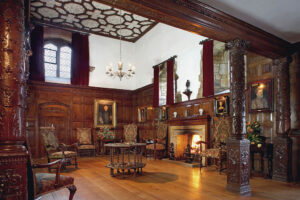
The party celebrations would have to go on hold. As it turned out, everything went on hold anyway in 2020, but this unexpected hiatus did give Simon and the team longer to discover some truly groundbreaking stories. There were two major threats in the 1380s: French invasion and domestic unrest. The Peasants’ Revolt erupted in 1381, just two years before what we now know was the construction date, making sense of Hever’s glorious double moat and no fewer than three portcullises, two of which are still in place. If an attacker managed to penetrate the first portcullis, arrows would rain on their heads from murder-holes in the roof while they were trying to break down the second. “They are without doubt the best surviving timber defences in Europe,” says Simon.
Once past the defences, the castle is a square shape. The old guidebook tells us that only the castle’s frontage is ‘original’ and that the other three sides were added by the Boleyn family. Simon Thurley has made the happy discovery that all four walls are from the very first build. When a visitor steps into the central courtyard today, they encounter pretty much the same sight as de Cobham himself. To their left were the family’s lodgings, to the right, the service areas and kitchen. At the back, the Great Hall was a focus for the entire household.
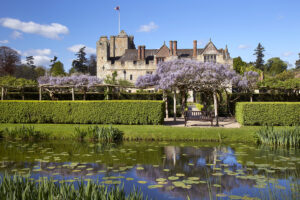
It continued to be so until 1461 when it was bought, along with Hever Brocas, by wealthy London merchant (and former Lord Mayor of London) Sir Geoffrey Boleyn. Boleyn already owned Blickling Hall in Norfolk but wanted somewhere he could really show off, and Hever was ideal – or, at least, nearly ideal. It just needed a few improvements, such as a private room with a bay window, one of the most fashionable extras a nobleman could install.
Geoffrey married well. Anne Hoo brought with her Luton Hoo in Hertfordshire, and their son Sir William also added to the family property portfolio, via his wife, Elizabeth, who inherited New Hall and Rochford Hall, both in Essex. William added a spiral staircase, marking the difference between old medieval ideas of communal living and new Tudor sensibilities around privacy. Most of the Boleyn homes were within a forty-mile radius of London, an important feature for a family craving power and influence. Hever was by now, however, mainly a family bolt-hole with discreet chambers and private closets.
Sir William’s son Thomas was an important courtier to Henry VIII, who made him a Knight of the Garter in 1523. The family spent much time in London, but Thomas was also abroad a lot, leaving his wife and children at Hever. One of these children would have a profound effect on the history of England.
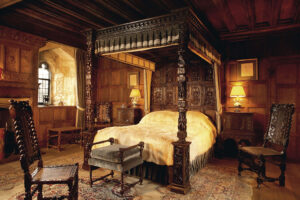
Anne Boleyn occupied the chambers to the left of the portcullis, looking over the moat. She was at Hever in 1526 during the famous ‘love crisis’ when Henry VIII became besotted with her. Anne refused to sleep with the king unless they were married but his wife Catherine of Aragon refused a divorce. Henry’s increasingly desperate love letters, read by Anne in the private chambers she would recognize today, would mark the beginning of the Reformation. In 1528, when the court – then at Greenwich Palace – was suffering with ‘sweating sickness’, Anne was again at Hever, to escape the sickness, but also to retreat from the crowded city.
Henry VIII eventually got his divorce, but as every schoolchild knows, Anne was eventually beheaded for treason. Her brother George was accused of incest and also executed. Hever went to Sir Geoffrey’s brother James, who, being a Catholic recusant and keen to stay in the shadows, preferred to live quietly in Norfolk.
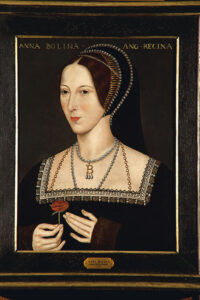
Somewhat ironically, he sold the estate to King Henry VIII, and this is where very exciting new revelations come in. Henry gave Hever to another discarded wife, Anne of Cleves, for life. It was always believed that Anne did not live at Hever but Simon Thurley’s detective work – via the shape of the windows, which are in a style that was unknown until the late 1540s, when Anne arrived – has proved that not only did the queen spend a lot of time at Hever, but that she did some building of her own.
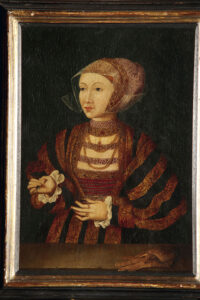
Anne installed another staircase and the magnificent Long Gallery above the Great Hall, complete with an extraordinary plasterwork ceiling. She would know it today, still being used for its original purpose as a portrait gallery.
Between Anne of Cleve’s death in 1557 and 1903, Hever was occupied by tenants and no money was spent on it. “This is absolutely marvellous,” says Simon. “It means that we can walk through the actual rooms the Boleyns walked through”. Having no Stuart, Georgian or Victorian ‘improvements’, however, also had a downside: by the end of the 19th century the castle was falling to pieces.
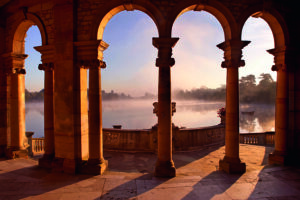
The final historical piece in the Hever jigsaw is William Waldorf Astor, the richest man in America, keen to make headway in British Society. The Astor family made many changes but were fascinated by the castle’s history and the restorations are largely sympathetic. In the castle grounds, Astor was also responsible for exquisite lake and gardens.
Hever is still in private care, and the present owners are also very interested in preserving its history. So when a surprise discovery was made in Australia – of an original deed of sale by Queen Mary after Anne of Cleves’s death, to the Waldegrave family, complete with wax seal – its purchase was quickly arranged. It has just returned to the castle for display in a more sumptuous setting.

Hever will have to wait a little longer for its 750th birthday party, but in losing a few years, it has gained previously unimagined historical depth and vibrance.
The next three years will see that history gradually revealed in new displays. An excuse to visit Hever every year – if excuse was ever needed…
This is an extract, read the full version in the May/June issue of BRITAIN, available to buy here from 7 April.
Read more:

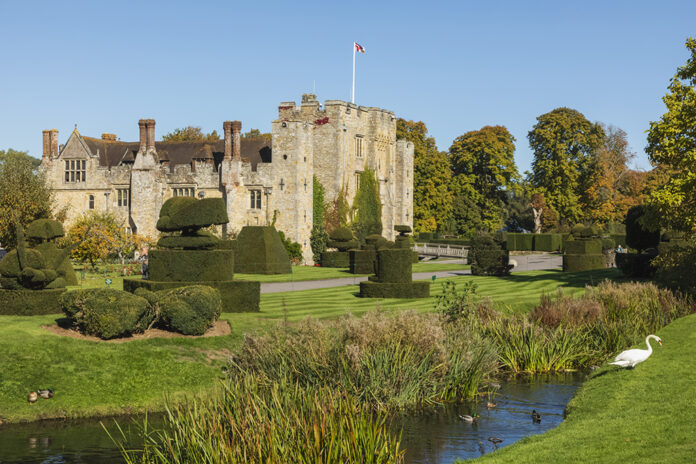




 © 2024
© 2024